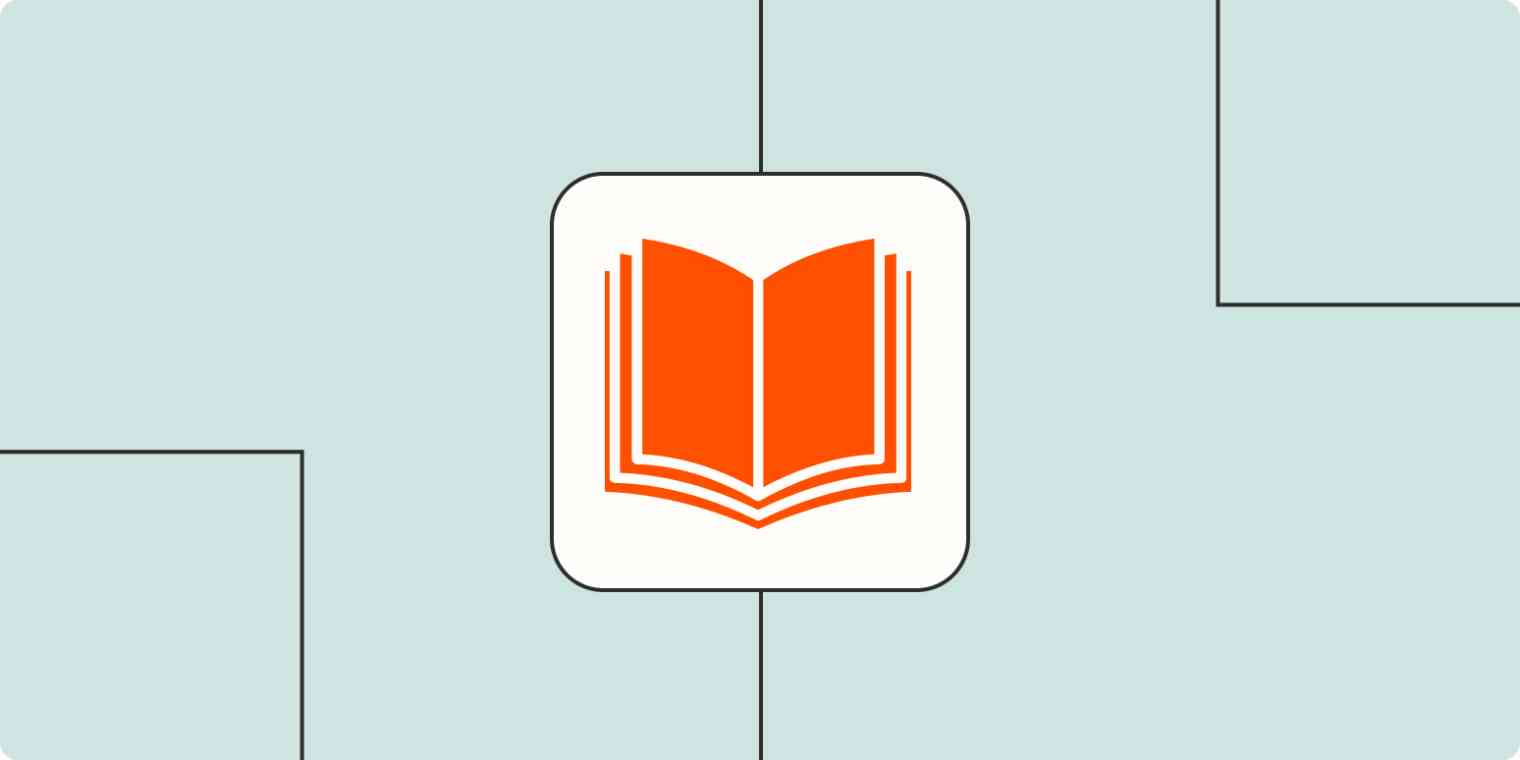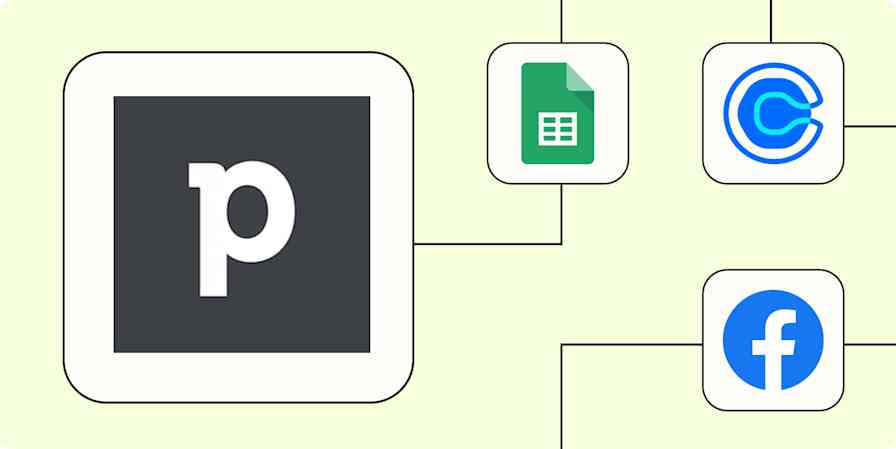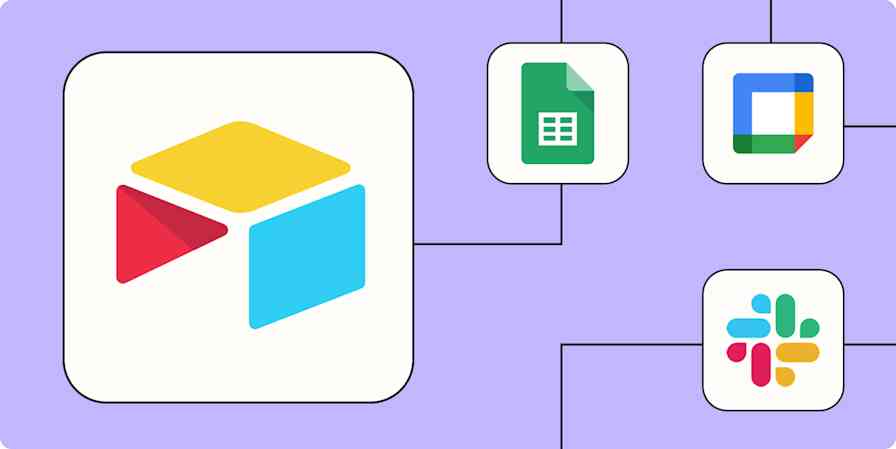Zapier's Learning and Development team hasn't created a calendar event or manually promoted internal workshops since 2020. We outsourced our admin work to automation so we could spend our time on tasks that need a human touch—like coaching and facilitating.
With Zaps—our word for our automated workflows—we built what we lovingly call the L&D robot to tackle those administrative tasks. We estimate our robot has saved our team over 1,000 hours of work each year and provided a higher-quality and more consistent learning experience for everyone at Zapier.
I'll walk you through how our robot works and share a few advanced Zap-building tricks to inspire you to think big when it comes to automating.
New to Zapier? It's workflow automation software that lets you focus on what matters. Combine user interfaces, data tables, and logic with 6,000+ apps to build and automate anything you can imagine. Sign up for free to use this app, and thousands more, with Zapier.
How we automated our L&D program
First, we identified repetitive work automation could do even better than we could. Our goal was to free our time up to do more complex tasks while improving how this repetitive work got done.
We asked the whole team to contribute to a wish list of L&D robot features. Here's a sample from our list.
The L&D robot will:
Create, coordinate, and track our live internal workshops
Increase attendance with intelligent promotion logic that messages the right people at the right time
Improve learning by messaging participants with pre-work, recaps, and surveys
Then we built a series of Zaps that targeted each item of our wish list, piece by piece, like a set of lego. These are the pieces that make up our L&D robot.
We continued to upgrade and add to our workflows over the last two years, building on their capabilities and features. Currently, 42 Zaps power the L&D robot! Here's a snapshot of some of the Zaps that make our robot run.
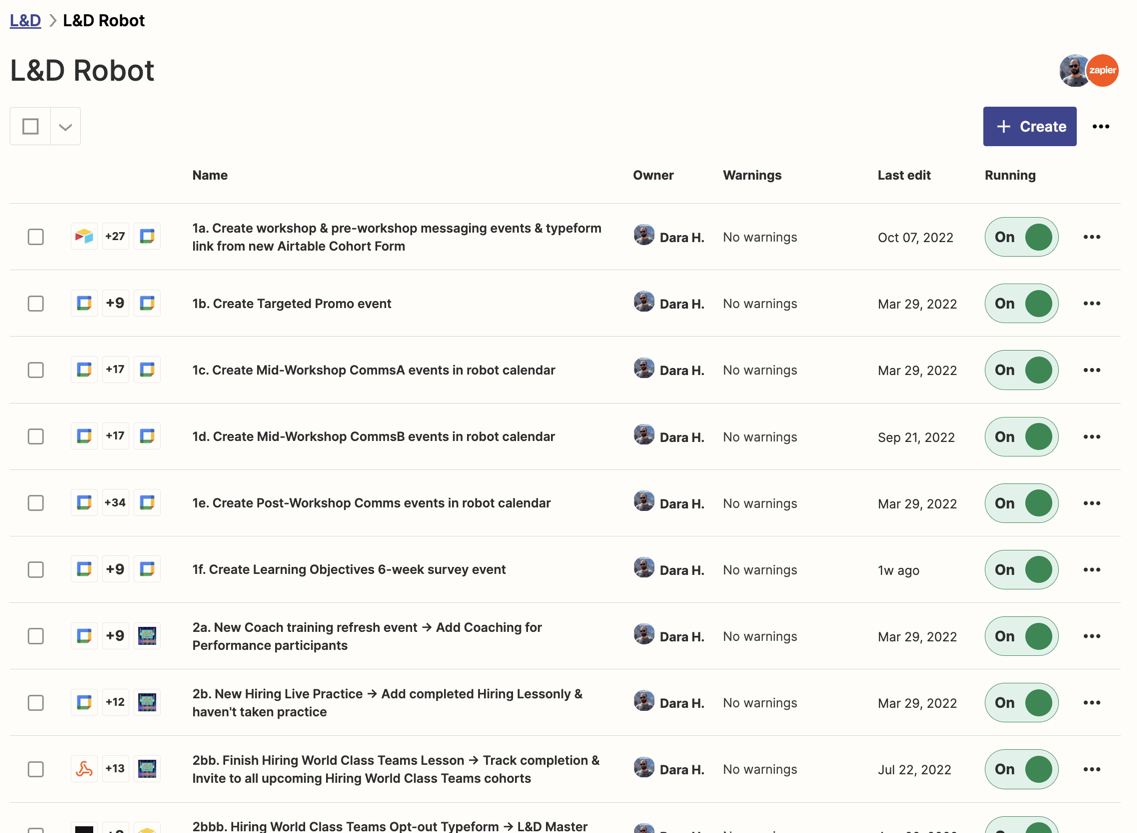
The 5 tools that power the L&D robot
Here are the building blocks that power our L&D robot.
Zapier
Simply put, the L&D robot is a series of Zaps. These Zaps power our robot and act as the instruction manual that tells it how to create calendar events, message team members, add people to workshops, track attendance, promote our workshops, and more.
While these Zaps connect to a bunch of different apps to power the different processes behind the robot, the following four are pivotal.
Learn more about automation and setting up Zaps in our quick-start guide.
Airtable
Airtable is the brain and database of the L&D robot and where we store key information. It tells our robot everything it needs to know about each of our workshops, what messages to send, how time zones work, and keeps track of workshop participation.

By modifying the fields in Airtable, facilitators can easily adjust the settings of each of our live programs without navigating our advanced system of Zaps. This means facilitators can own and update their programs without touching any of the critical Zaps that run our L&D robot. This makes our system easier to use and less likely to break.
Learn more: Discover 7 ways to automate Airtable
Google Calendar
Google Calendar is the command center that tells the L&D robot when to take action and what action to take.
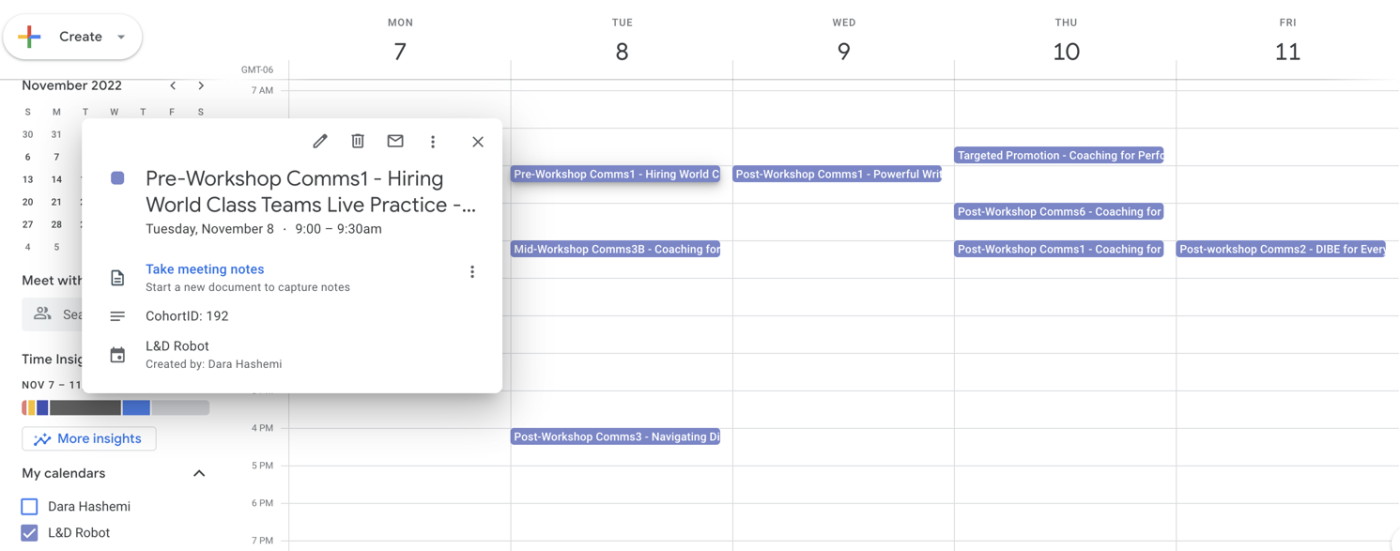
A Zap creates the calendar events above based on each of our workshop's specific settings in Airtable. Other Zaps then look for those same calendar events to activate and promote that workshop, message attendees with important info, and remind facilitators to add their Zoom links.
Learn more: How to automate Google Calendar
BambooHR
BambooHR, our HR system, gives the L&D robot important info it needs about each of our team members. For example, when a Zap runs that promotes a workshop, it looks up each team member at Zapier, searches for their profile in BambooHR, and uses their timezone info to determine if it should tell them about that particular workshop.
Learn more: The top ways to automate BambooHR
Slack
Slack is the voice the L&D robot uses to communicate with workshop facilitators and everyone at Zapier. A series of Slack Zaps send fully formatted dynamic messages based on the details of that specific workshop.
Here's how we format the message in our Zap using data pulled from our Airtable database:
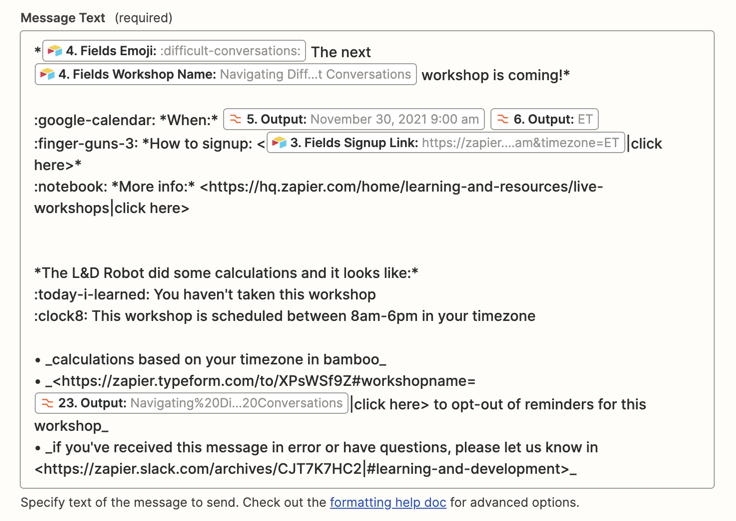
And here's the notification a Zapier employee will receive:
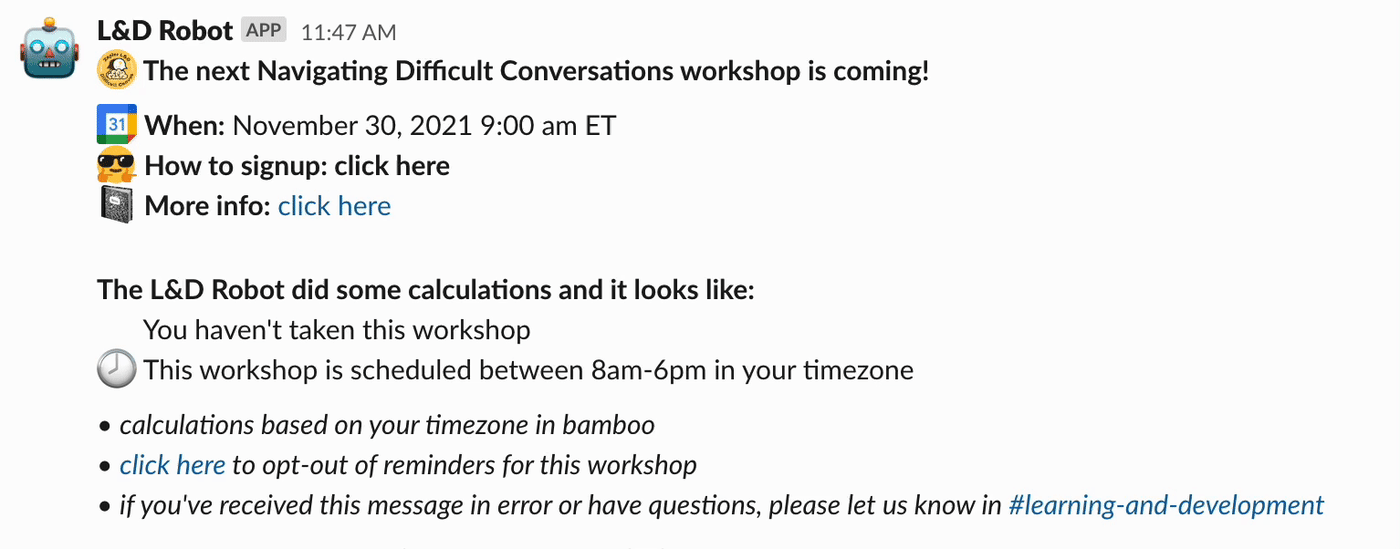
Our favorite L&D robot features
Automatic workshop creation
Creating a workshop is as easy as filling out this form:
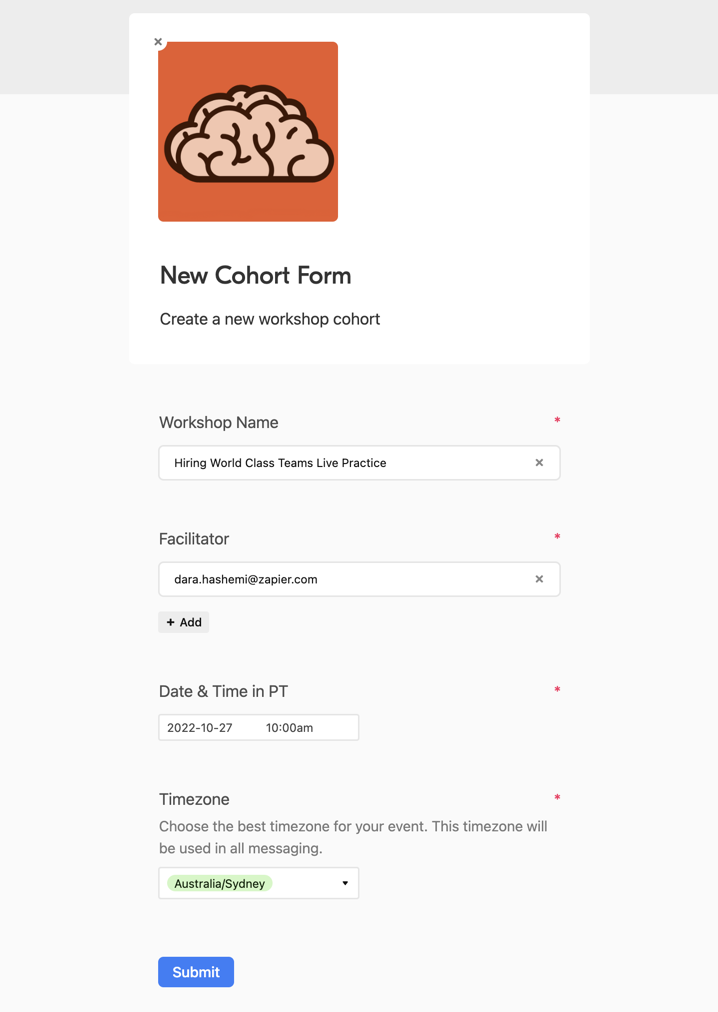
A Zap triggers off an Airtable form, so facilitators don't need to manually type the same information for a repeated workshop each time. Once the facilitator fills out the form, the Zap pulls information from the Airtable database to find everything it needs to know about the workshop it's creating, like:
How many sessions are there?
How long is each session?
When should it promote the workshop?
What messages should it send and when?
Is there any pre-work attendees need to do?
The same Zap also creates all the Google Calendar events for the workshop. This prevents human error at each step, like when creating the event, promoting it to eligible employees, and reminding folks who signed up.
It also messages the facilitator once it's done. This gives our facilitators time to prep and double-check the L&D robot's work.
Intelligent workshop promotion
Intelligent workshop promotion means we only have to add the details about an event to our database once to have it promoted repeatedly in the future with no extra work on our end. Here's how it works:
The L&D robot uses details from our Airtable database and Looping by Zapier to scan through everyone at Zapier and tell them about our workshop if:
They haven't taken the workshop already.
The workshop occurs between 8 am and 6 pm in their local timezone.
They meet all prerequisites, like completing an eLearning course in our Learning Management System (LMS) Lessonly.
They haven't surpassed the lead time limit for that workshop. The lead time limit ensures folks aren't able to sign up last minute for a workshop that has pre-work.
If it is a manager-only workshop, they're a manager.
They haven't opted out of workshop promotional messages.
One of the most challenging problems to solve was teaching the L&D robot to promote a workshop only if it occurs during that particular team member's working hours. The answer was to create a table that tells the L&D robot which time zones fall between 8 am and 6 pm for every hour of the day. Here's how this works:
The L&D robot uses Google Calendar to identify what hour of the day that particular workshop begins.
It then looks up that hour of the day in our handy timezone table in Airtable, pictured below.
It then uses Looping by Zapier and a Filter step to compare each employee's time zone data with the list of approved time zones for that hour of the day.
For example, if the L&D robot knows a workshop starts at 9 am PT, it looks to see which team members are in one of the time zones associated with 9 am PT in our colorful timezone table.
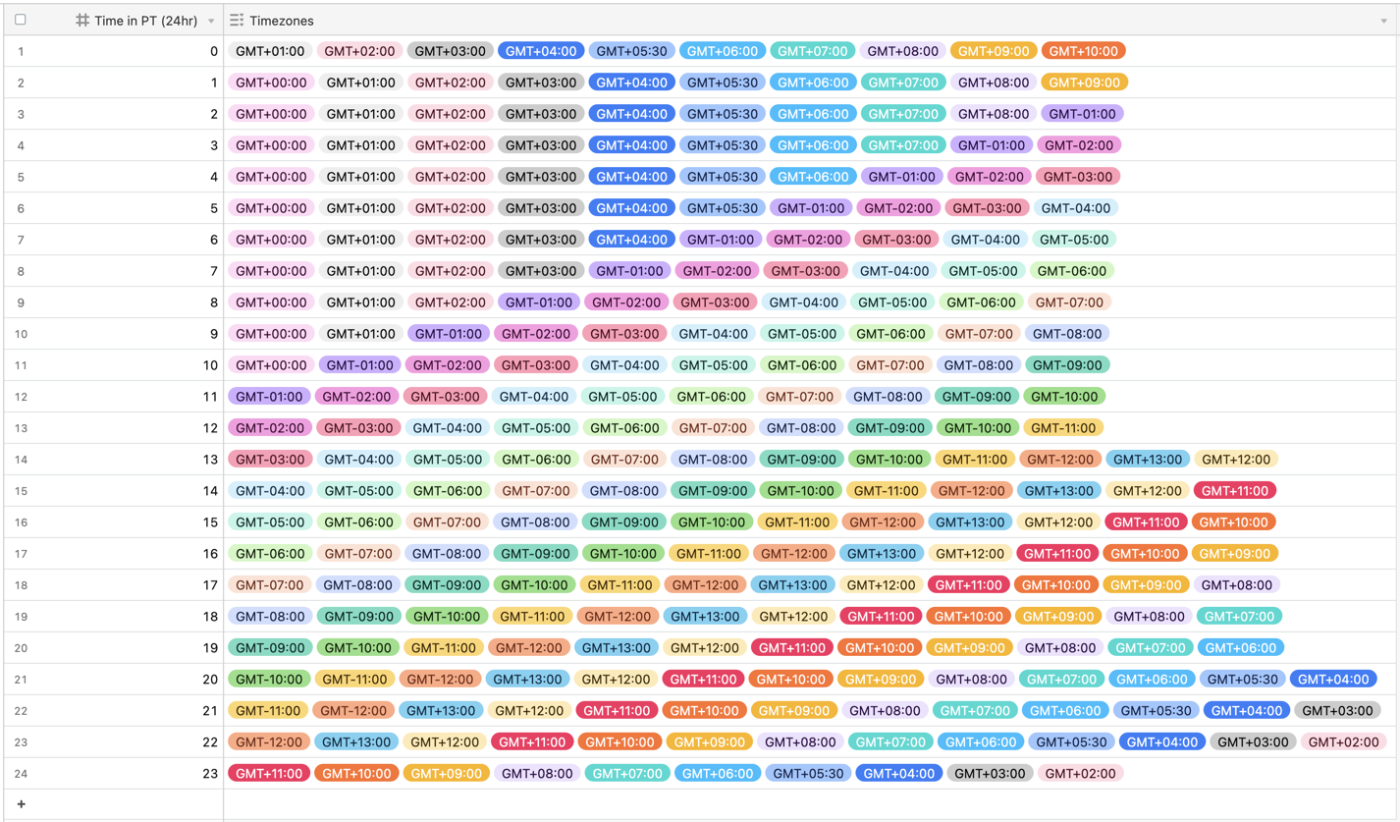
If all the filters and logic pass for that particular team member, the L&D robot sends them a message with info about that particular workshop, a signup link, and why they got this message in the first place.
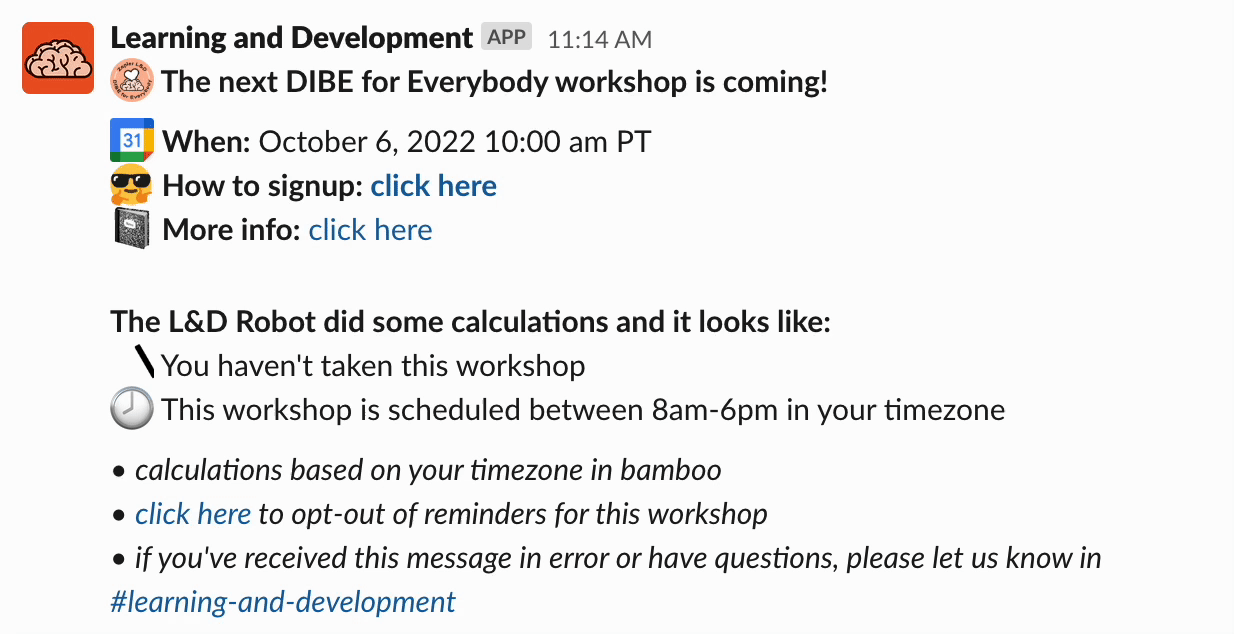
A cool little detail: the L&D robot will promote the workshop in the timezone the facilitator indicated when creating the workshop. This means team members in Sydney, Australia would see a workshop scheduled specifically for them in AEST.
Improve messaging for our learners
Helping our team members learn new skills and behaviors involves more than just attending a live workshop. Learners need a heads-up on pre-work, recaps of what they learned, and supplemental material over the next 6 months. This is difficult and tedious work for a human to do consistently with large groups of people while juggling multiple workshops, but it's pretty darn easy for a robot.
Our biggest challenge was giving facilitators a simple way to tell the L&D robot when to send messages and what to say without having to modify a ton of advanced Zaps. Once again, Airtable came to our rescue!
One time only, facilitators add details to the Airtable base on when to send Slack messages and what to say. When a calendar event is created for the new workshop, a series of Zaps checks our Airtable to see who signed up or attended the workshop and then uses Looping by Zapier to send the appropriately-timed Slack message to each of those team members.
Here's what one of those messages looks like from our Coaching for Performance workshop. Team members that sign up will receive this message the day before their workshop begins.

How the L&D robot has helped our team
We've seen some pretty amazing improvements since we started letting the L&D robot take charge of our admin work. As we already shared, we estimate our robot has saved our team over 1,000 hours of work each year.
Says Ashley Priebe Brown, an Onboarding Program Manager on our team, "The robot has reduced a ton of manual work for facilitators. All we have to do is prepare the content for our sessions and show up to facilitate them!"
Danielle Meinert, a manager on the L&D team, agrees. "As a coach and facilitator, the L&D robot lets me focus on my work: coaching and facilitating. The manual tasks of creating calendar events, marketing our programs, and sending feedback forms is automatically done for me. Robots create time so we humans get to work with other humans."
The robot has also greatly increased participation in our workshops. Since we built intelligent workshop promotion, we've seen up to 20 times the participation.
"It's helped us connect our teammates with the right workshops to meet their needs," says Ashley. "Having the robot suggest options instead of asking teammates to search for sessions lowers the threshold for engagement."
Go build a robot!
I hope you're feeling inspired to build some Zaps that will not only save you time, but do things better than a human could ever do! Get together with your team and dream up what your robot can do.
New to Zapier? It's workflow automation software that lets you focus on what matters. Combine user interfaces, data tables, and logic with 6,000+ apps to build and automate anything you can imagine. Sign up for free to use this app, and thousands more, with Zapier.
